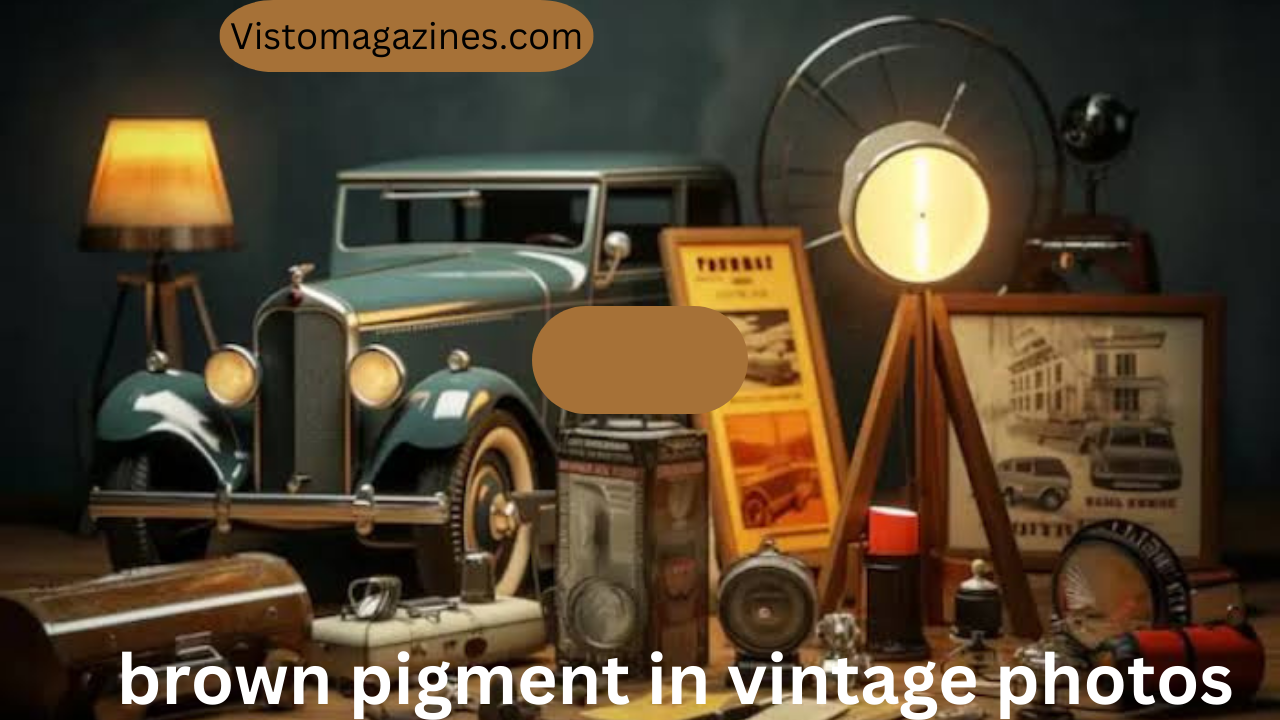The Significance of Brown Pigment in Vintage Photos: An Insight into Early Photography
Vintage photographs are treasured pieces of history, often cherished for the stories they tell and the emotions they evoke. One feature that many vintage photos share is the prevalence of brown pigments in their tones and colors. These brown hues, which appear in a variety of shades, were not only a result of the materials used in the photographic process but also a reflection of the techniques and technologies of the time. In this article, we will explore the role of brown pigment in vintage photos, examining its origins, significance, and impact on how we view early photography today.
The Evolution of Early Photographic Processes
In the early days of photography, the technology used to capture and preserve images was in its infancy. The first photographic processes, such as daguerreotypes and tintypes, did not have the same ability to produce vibrant color photographs that we are accustomed to today. Instead, these processes relied on various chemicals, metals, and organic materials that often produced sepia-toned or brownish images.
The first significant photographic process, the daguerreotype, invented in 1839 by Louis Daguerre, involved creating an image on a polished metal plate. After the exposure, the plate was developed using mercury vapor, which gave the final image a silvery sheen with some brown undertones. The tintypes, which became popular in the mid-1800s, used a similar approach but involved a thin sheet of iron as the base. Like daguerreotypes, tintypes often resulted in images with brownish tones, though they could range in hue depending on the particular chemical treatments used.
In addition to the materials and processes involved, early photographic paper often included natural organic compounds such as tannins. Tannins, found in plant-based materials like wood and bark, could cause brownish discoloration over time, and they may have contributed to the characteristic brown pigments in vintage photos.
The Role of Brown Pigment in Sepia Toning
One of the most notable aspects of vintage photographs is the sepia toning, which results in a rich, warm brown color. Sepia toning was a popular technique used in the late 19th and early 20th centuries to enhance the visual appeal of black-and-white photographs. While black-and-white photography captures an image in shades of gray, sepia toning added a brownish tint to the final print.
The process of sepia toning involved replacing the metallic silver in the photograph with silver sulfide, which creates a sepia-brown color. This technique was initially developed as a way to improve the longevity of photographic prints, as it made the images more resistant to fading. Over time, however, sepia-toned photographs became a symbol of nostalgia and elegance, and the brown pigment became a hallmark of vintage photography.
In addition to the preservation benefits, sepia toning also gave photographs a more natural, softer appearance compared to the harsh contrasts found in traditional black-and-white images. The brown hues were particularly appealing to portrait photographers, as they helped to soften skin tones and make the images appear more lifelike.
The Significance of Brown Tones in Portraying the Past
The prevalence of brown pigments in vintage photographs plays an important role in how we perceive and connect with the past. The warm, earthy tones evoke a sense of history, nostalgia, and age, creating a visual link to times long gone. When we view a vintage photograph with brown tones, we are not only seeing an image from the past; we are also experiencing the visual characteristics that come with the passage of time.
The brown pigment in vintage photos contributes to the emotional weight these images often carry. The sepia tones, in particular, are closely associated with memories, family history, and sentimentality. This connection between brown pigments and nostalgia is one reason why sepia-toned photos remain so popular today in both fine art and personal photography. These brown-toned images transport us back to earlier periods, evoking feelings of connection with our ancestors or a sense of longing for a time that seems simpler or more romantic.
In this way, the brown pigments in vintage photos are not just the result of chemical processes or artistic choices. They also shape our perception of the past and influence how we relate to historical moments captured in images. The brown tones have become iconic, symbolizing a bygone era in a way that no other color can quite replicate.
The Impact of Brown Pigment on the Preservation of Vintage Photos
While brown pigment plays a significant role in the aesthetic of vintage photos, it also has an impact on their physical preservation. Over time, photographs that contain brown tones can undergo chemical changes due to environmental factors like light exposure, temperature, and humidity. These changes can lead to further darkening of the image or the gradual fading of details, resulting in a photograph that may become less clear or more heavily brown-toned with age.
In some cases, the brownish discoloration may be due to the oxidation of chemicals like iron or silver that were used in the photographic process. As photographs age, the metal elements within the image may react with oxygen in the air, causing the tones to shift toward brown or even rust-colored hues. While this process is often seen as a natural part of aging, it can also pose challenges for archivists and conservators who are tasked with preserving these images for future generations.
Some collectors and photographers may choose to use modern digital tools or restoration techniques to “restore” vintage photos, adjusting the brown pigments or attempting to remove any discoloration. However, many believe that the aging process is part of the charm and history of these images, adding authenticity to their visual appearance. For this reason, brown pigments in vintage photos continue to be appreciated both as a result of their historical context and as an intrinsic element of the photographic process itself.
Modern Use of Brown Pigment in Photography
In the contemporary world of photography, brown tones are still used, albeit in a different context. While modern photography no longer relies on the same materials and processes that produced brown pigments in vintage photos, sepia toning and other brown hues remain popular choices for photographers who wish to evoke a sense of timelessness or nostalgia in their work.
Modern photographers can use digital editing tools to replicate the appearance of brown-toned vintage photos. By adjusting the color balance, saturation, and contrast, they can create images that closely mimic the sepia-toned look of the past. These images, whether they feature portraits, landscapes, or street scenes, carry with them a sense of historical reference that many people find visually appealing.
The use of brown pigment in contemporary photography, however, often carries with it a deliberate artistic choice rather than a necessity born of early photographic limitations. Today’s photographers have the ability to capture images in full color and high resolution, but the brown tones still evoke the classic aesthetic and emotional resonance of vintage photography.
Conclusion
The brown pigment in vintage photos serves as a visual signature of the past, providing us with a glimpse into the world of early photography and the chemical processes that shaped it. From sepia toning techniques to the natural aging of photographic materials, brown tones have played a vital role in the look and feel of vintage photos.
As we continue to explore and appreciate the legacy of these images, it is clear that brown pigments are more than just a result of the photographic process—they are a link to history, memory, and emotion. Whether through the warm sepia hues that soften portraits or the deep browns that age with time, these pigments help to preserve the stories of the past and allow us to connect with them on a deeper level.
In today’s digital world, we still look to the past for inspiration, finding value in the aesthetics and emotional depth of brown-toned vintage photos. The brown pigment in vintage photos, with all its warmth and richness, remains an essential element of photography’s history and continues to influence the way we create and appreciate images today.



